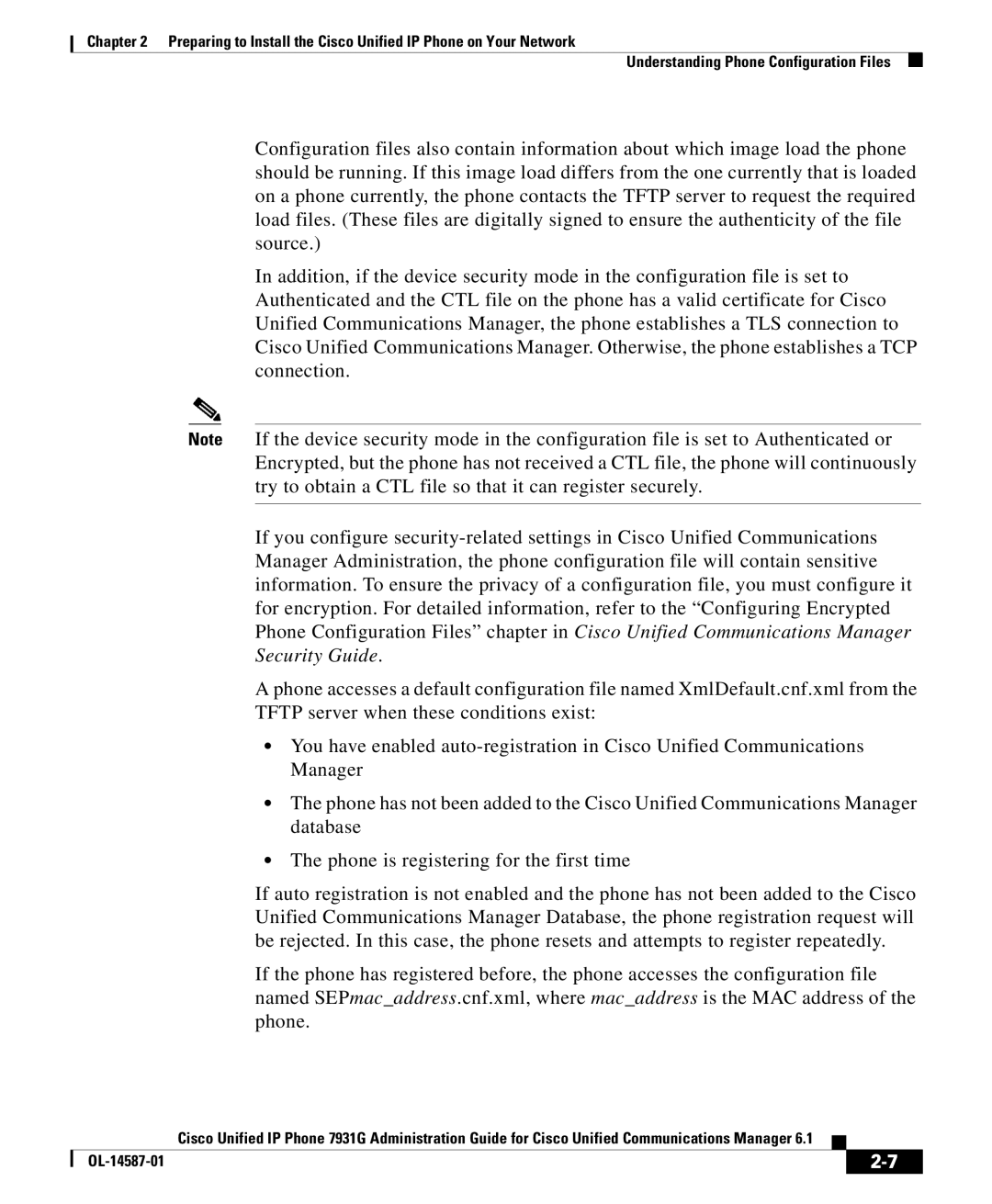
Chapter 2 Preparing to Install the Cisco Unified IP Phone on Your Network
Understanding Phone Configuration Files
Configuration files also contain information about which image load the phone should be running. If this image load differs from the one currently that is loaded on a phone currently, the phone contacts the TFTP server to request the required load files. (These files are digitally signed to ensure the authenticity of the file source.)
In addition, if the device security mode in the configuration file is set to Authenticated and the CTL file on the phone has a valid certificate for Cisco Unified Communications Manager, the phone establishes a TLS connection to Cisco Unified Communications Manager. Otherwise, the phone establishes a TCP connection.
Note If the device security mode in the configuration file is set to Authenticated or Encrypted, but the phone has not received a CTL file, the phone will continuously try to obtain a CTL file so that it can register securely.
If you configure
A phone accesses a default configuration file named XmlDefault.cnf.xml from the TFTP server when these conditions exist:
•You have enabled
•The phone has not been added to the Cisco Unified Communications Manager database
•The phone is registering for the first time
If auto registration is not enabled and the phone has not been added to the Cisco Unified Communications Manager Database, the phone registration request will be rejected. In this case, the phone resets and attempts to register repeatedly.
If the phone has registered before, the phone accesses the configuration file named SEPmac_address.cnf.xml, where mac_address is the MAC address of the phone.
|
| Cisco Unified IP Phone 7931G Administration Guide for Cisco Unified Communications Manager 6.1 |
|
|
|
|
| ||
|
|
| ||
|
|
|
